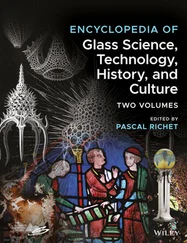John Pollen - British Manufacturing Industries - Pottery, Glass and Silicates, Furniture and Woodwork.
Здесь есть возможность читать онлайн «John Pollen - British Manufacturing Industries - Pottery, Glass and Silicates, Furniture and Woodwork.» — ознакомительный отрывок электронной книги совершенно бесплатно, а после прочтения отрывка купить полную версию. В некоторых случаях можно слушать аудио, скачать через торрент в формате fb2 и присутствует краткое содержание. ISBN: , Жанр: foreign_antique, foreign_prose, на английском языке. Описание произведения, (предисловие) а так же отзывы посетителей доступны на портале библиотеки ЛибКат.
- Название:British Manufacturing Industries: Pottery, Glass and Silicates, Furniture and Woodwork.
- Автор:
- Жанр:
- Год:неизвестен
- ISBN:http://www.gutenberg.org/ebooks/38953
- Рейтинг книги:5 / 5. Голосов: 1
-
Избранное:Добавить в избранное
- Отзывы:
-
Ваша оценка:
- 100
- 1
- 2
- 3
- 4
- 5
British Manufacturing Industries: Pottery, Glass and Silicates, Furniture and Woodwork.: краткое содержание, описание и аннотация
Предлагаем к чтению аннотацию, описание, краткое содержание или предисловие (зависит от того, что написал сам автор книги «British Manufacturing Industries: Pottery, Glass and Silicates, Furniture and Woodwork.»). Если вы не нашли необходимую информацию о книге — напишите в комментариях, мы постараемся отыскать её.
British Manufacturing Industries: Pottery, Glass and Silicates, Furniture and Woodwork. — читать онлайн ознакомительный отрывок
Ниже представлен текст книги, разбитый по страницам. Система сохранения места последней прочитанной страницы, позволяет с удобством читать онлайн бесплатно книгу «British Manufacturing Industries: Pottery, Glass and Silicates, Furniture and Woodwork.», без необходимости каждый раз заново искать на чём Вы остановились. Поставьте закладку, и сможете в любой момент перейти на страницу, на которой закончили чтение.
Интервал:
Закладка:
For earthenware or china, the English potters use only two sorts of clays: the ball clay, also called blue clay, and the kaolin. For porcelain the last only is used; for earthenware, both. The ball clay, exported from Teignmouth and Poole, comes from the lower tertiary clays of Devon and Dorset, and is remarkably good and plastic, the quantity of iron being comparatively very small. The ball clay from Poole is dug in the neighbourhood of Wareham, by Mr. Pike. It is of a very superior kind, and more than 70,000 tons are sent from that harbour alone to the potteries, besides smaller quantities to the Continent. As it possesses a little more alumina than those from Teignmouth, which are dug at Teigngrace and Whiteway, near Bovey Heathfield, they ought to have a little superiority over these, although in practice the difference is not always perceptible.
Kaolin is the Chinese word given to the clay from which hard porcelain is made, though here it is generally called China or Cornish clay. This material is found in some granitic rocks in an advanced state of decomposition; the felspar, their most important element, having under external influence lost the greatest portion of its alkali, and become converted into a kind of earth. By agitation in a large quantity of water it dissolves readily; the refuse, composed of quartz, mica, schorl, and undecomposed felspar, sinks by its own weight to the bottom of the tank where the liquid mixture is to run; and the finest part, which is the kaolin, is carried farther to large receptacles, where it accumulates. When these are full, the clay is removed and dried for export. In that state it is very white, and although not so plastic as the ball clay, contains a little more alumina and less iron, which accounts for its resisting much better the action of fire. It is principally obtained at St. Stephens and St. Austell, in Cornwall; Lee Moor, near Dartmoor, in Devon, and a few other places; the whole of them sending to the potteries about 130,000 tons annually.
From the same districts comes another granite, in a less advanced state of decomposition, called Cornish stone, which is used fresh from the mine without further preparation. In it the felspar retains its alkaline element, so that it can be easily melted, and is found a useful and cheap flux for the vitrification of the different mixtures. The composition of these rocks varies considerably, so that it requires constant experiments to determine in what proportion the quartz and the fusible parts stand to each other.
Flints are also largely used in the manufacture of earthenware. They are found abundantly in the chalk districts, the brown sort being considered the best. Under a moderate red heat they become white and opaque, and may be easily crushed between iron rollers. In that state they are placed in pans of water and ground by large stones of chert, till they become sufficiently divided to remain in suspension in the liquid without sinking and hardening at the bottom of the tanks, which, by the way, are called "arks." Flints are comparatively a cheap material, and their carriage to Staffordshire represents a large portion of their cost.
Such are the four materials essential for making earthenware. The respective quantities in which they are used vary in each manufactory, but the principle is always the same: the ball clay being the foundation, and flint the whitening material; but as an excess of this would make the body difficult to work, Cornish clay assists in making it whiter and less liable to break under a heavy weight or sudden changes of temperature. The Cornish stone is used in a small quantity as a flux, to render the ware more compact and of a closer texture. When the mixture of these materials is completed, the colour taken by earthenware when fired would not be a perfect white; the quantity of oxide of iron existing in the clays, however small, would be still sufficient to impart a yellowish tint, particularly after the glazing of the ware. This is counteracted by the addition of a small quantity of oxide of cobalt, the power of which over the iron, as a staining material, is such as to neutralize it completely; the result, in fact, being the same as that obtained by washerwomen, who use blue to the linen with the object of making it look white.
From the moment that the materials are extracted, to the time when the goods are perfected, the number of distinct operations to perform is so great, that I can only give a summary description of the most important. The grinding of those materials which are not already in a fine state of division is one of the most essential, for upon it depends the soundness of the ware, and without it the difficulties of workmanship would be greatly increased. It must be so perfect, that when the different components are put together in the slip state, they should mix readily and form a homogeneous compound. The grinding for the use of potters is a trade of itself; but good quality is of such importance, that the manufacturers who can afford it prefer having mills of their own. In these, the different materials are ground in water in separate pans, till they can pass freely through fine silk lawn, and are afterwards stored in distinct reservoirs, and the excess of water removed, so that a quart measure of each should weigh a determined number of ounces. As the potter knows beforehand the proportion of solid matter contained in each liquid measure, it only remains for him to count the number of quarts or gallons which must be introduced into the body of the ware. This being done, the liquid mass must be deprived of its superabundance of water. Till lately it was the custom to effect this by running the slip 10 or 12 inches thick over the surface of long kilns, paved with bricks and provided with flues underneath. The heat which was maintained in these, assisted by the porous nature of the bricks, was sufficient to bring it to the proper state of toughness; but the kilns could not be filled more than once a day, and required besides a large quantity of fuel, much of which was wasted in the form of dense smoke. Now, thanks to the new apparatus of Messrs. Needham and Kyte, the same result is obtained with great saving in space, time, and fuel.
The process is simple, and easy to manage. As soon as the final mixture is sifted, the slip is directed to a well, whence it is raised by an hydraulic pump and sent to the presses, which are composed of a variable number of large wooden frames. These are closely ribbed on both faces, and, when placed side by side in a vertical position, they leave in the middle an interval of about three-quarters of an inch in thickness. Each of these hollow compartments is lined with a sheet of strong cotton stuff, folded in such a way as to form a bag, in the middle of which a small metal fitting passes through the upper part of the frames, and forms the spring by which the slip can be admitted into the interior. When the bags are tied together, the slip is admitted into their interior and submitted to such pressure from the pump, that the water filters through the interstices of the stuff, and escapes by the small intervals left between the ribs of the frames. After allowing a sufficient time for the action of the pump, the presses are dismounted, and the solid clay is found in the middle of the bags, ready for use in the various departments.
The processes for shaping the different articles are many. For the more expeditious preparation of the wares, it was necessary that each workman should devote the whole of his time to a special branch of his art. For this reason we have several classes of potters, called according to their avocation: throwers, turners, handlers, hollow and flat ware pressers, figure and ornament makers, tile makers, modellers, mould and sagger makers, besides those who are employed in the decoration of the goods. Of all these various branches, the most attractive for those who are witnessing it for the first time, is the throwing; and it is a source of amazement for them to see how quickly, in the hands of the potter, the same lump of clay can be transformed in a variety of ways.
Читать дальшеИнтервал:
Закладка:
Похожие книги на «British Manufacturing Industries: Pottery, Glass and Silicates, Furniture and Woodwork.»
Представляем Вашему вниманию похожие книги на «British Manufacturing Industries: Pottery, Glass and Silicates, Furniture and Woodwork.» списком для выбора. Мы отобрали схожую по названию и смыслу литературу в надежде предоставить читателям больше вариантов отыскать новые, интересные, ещё непрочитанные произведения.
Обсуждение, отзывы о книге «British Manufacturing Industries: Pottery, Glass and Silicates, Furniture and Woodwork.» и просто собственные мнения читателей. Оставьте ваши комментарии, напишите, что Вы думаете о произведении, его смысле или главных героях. Укажите что конкретно понравилось, а что нет, и почему Вы так считаете.












![John Bruce - The Lettsomian Lectures on Diseases and Disorders of the Heart and Arteries in Middle and Advanced Life [1900-1901]](/books/749387/john-bruce-the-lettsomian-lectures-on-diseases-and-disorders-of-the-heart-and-arteries-in-middle-and-advanced-life-1900-1901-thumb.webp)